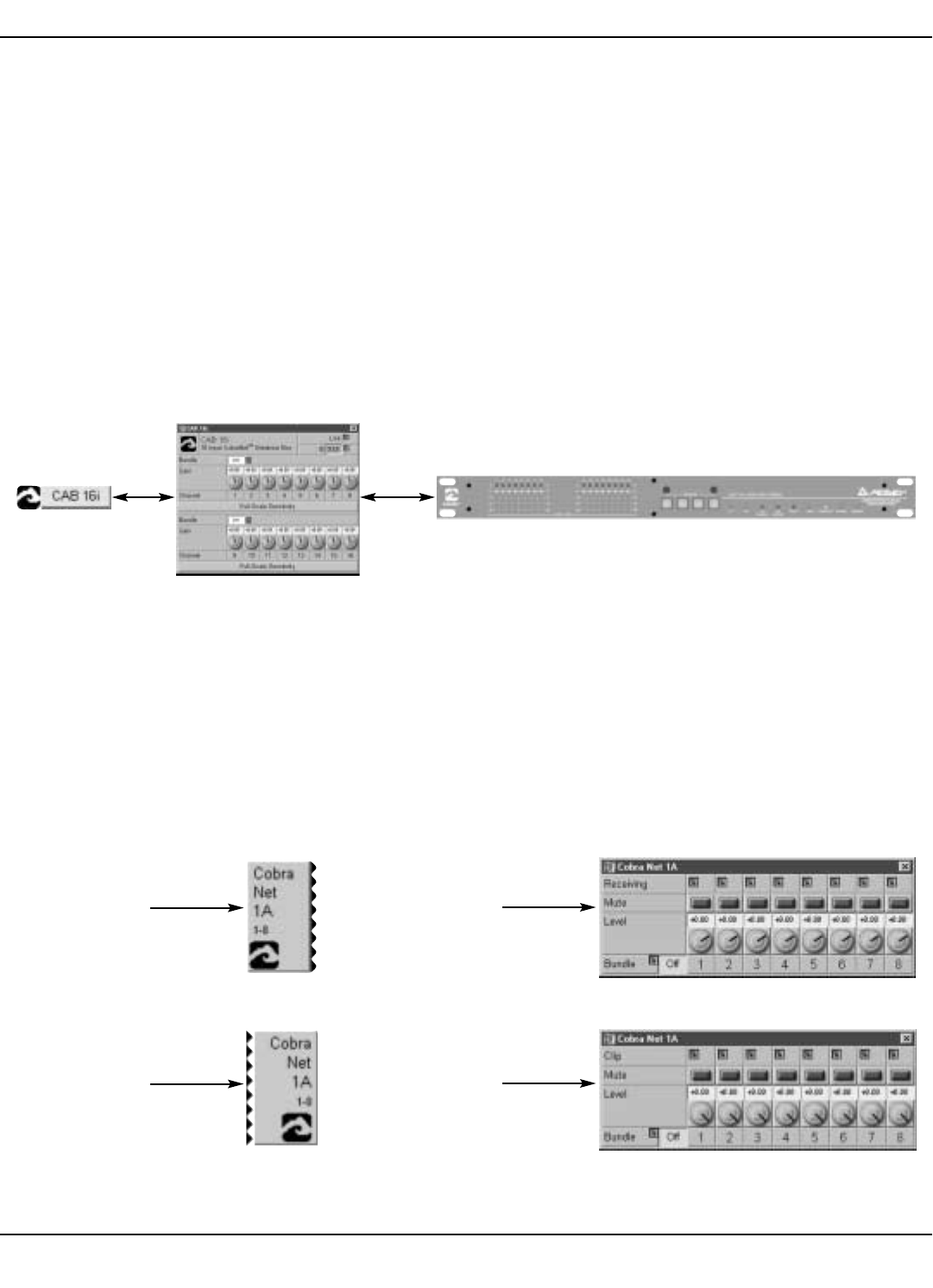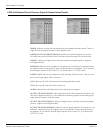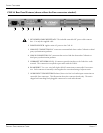
CAB
™
16 Series User Manual
Page 10 http://aa.peavey.com copyright 2000 All Rights Reserved
Hardware vs. Software Devices
The CAB 16 Series of products is an integration of physical hardware and software. Within CobraNet
™
, there are even further
integrations, that being the network itself, and the actual piece of equipment, in this case, the CAB 16. In software, the equip-
ment is represented by a “Device” within the MediaMatrix MWare application. The CobraNet network is represented by a tra-
ditional MediaMatrix wiring block with inputs and outputs. The “wire” between these blocks is the configuration of audio sig-
nal flow with the MediaMatrix’s DPU. For proper operation of these products, a thorough understanding of all of these
devices is required.
There is a very basic relationship between the CAB 16 physical product and its accompanying software device. Essentially, the
software device is the “Control Panel” for the hardware. There are no physical controls on the CAB 16 itself, so all functions for
it are accessible only from its software based control panel. This control panel is a yellowbox labeled “CAB 16”, and can be
found under the Input/Output, CobraNet section of the Device Menu within the MediaMatrix software. There is one for each
model of CAB 16 product. I like to refer to this device as the “Taxi”, since it’s a yellow CAB......get it?
The figure below shows the relationship between the Taxi, its control panel and the actual CAB hardware.
The second half of this equation, as mentioned above, is the audio transport. This transport is the CobraNet network that car-
ries audio from one location to another. Within MediaMatrix, this is represented by a block with “wire nodes” on it that repre-
sent the actual input and output points for the system. What is very important to note is that the hardware unit, the CAB
itself, and the audio transport device DO NOT necessarily match up. For example, it is possible to have one output wiring
block assigned to multiple CAB 16o units although generally, the input side is always a one-to-one relationship. In the figure
below, you can see the two network blocks. The one with the nodes on the right of the block is an audio “input” position, the
one with the nodes on the left side of the block is an audio “output” position. Each of these also has a control panel. The con-
trol panels for each are very similar, so don’t get them mixed up. You can tell which one is the “input” side by the “Receiving”
label on the channel LEDs. These LEDs indicate that an audio data stream is successfully being received from a distant network
location.
Fig. 1, The CAB components and their relationships.
Fig. 2, The CobraNet audio transport devices and their control panels.
Input Side of
Audio Path
Output Side of
Audio Path
CobraNet Input
Control Panel
CobraNet Output
Control Panel


















